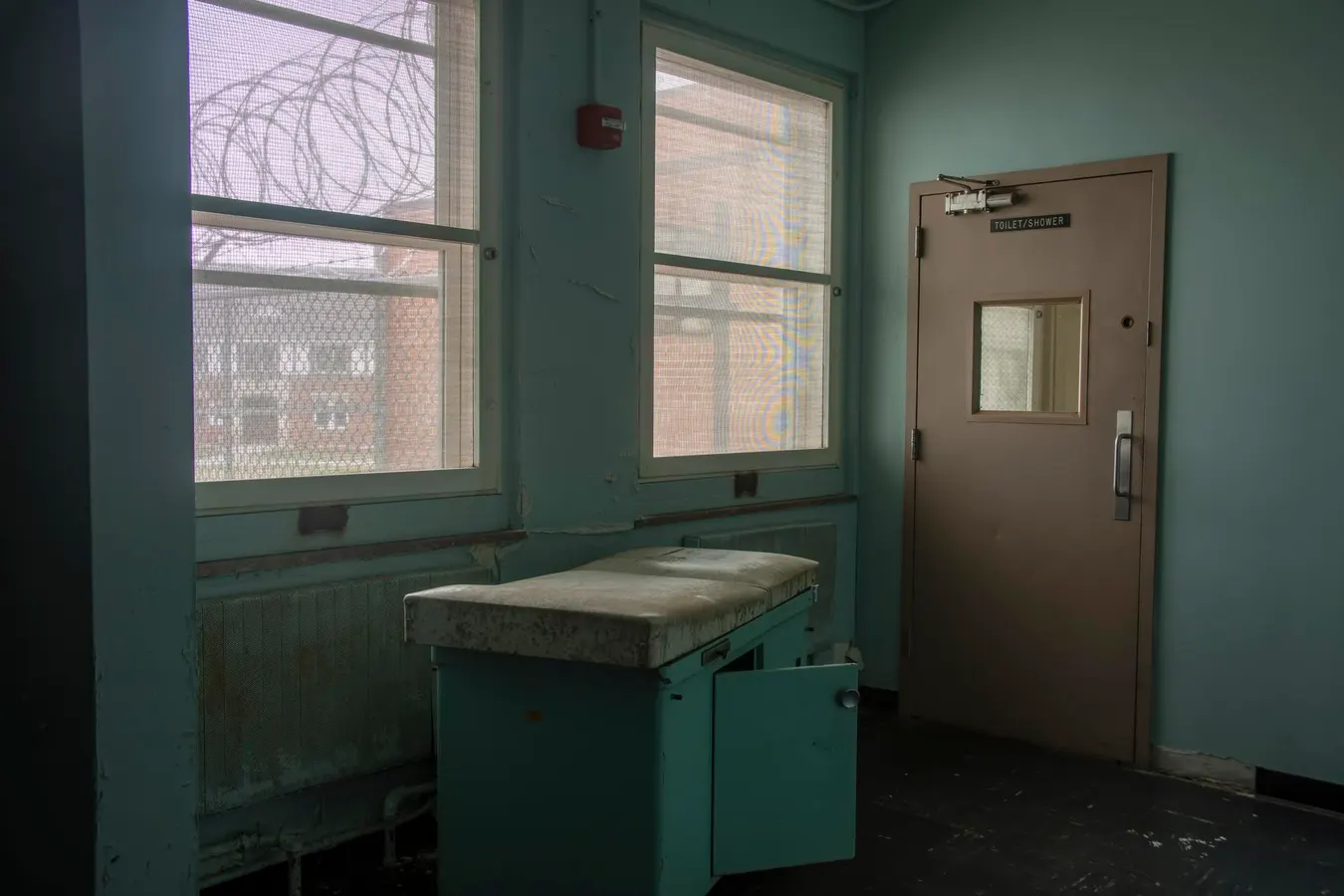By Contributor,Walter Pavlo
Copyright forbes

FCI SeaTac underwent an inspection by OIG and the results show staffing shortages and poor medical care.
The Federal Detention Center in SeaTac, Washington, stands just a few minutes from Seattle-Tacoma International Airport, a blocky concrete tower encircled by chain-link fencing and razor wire. Opened in 1988, it is unusual in that it houses both men and women, many of them pretrial detainees or prisoners in transit, giving it a restless, transient character. Officially, the prison can hold just over a thousand inmates, though its population often hovers well below that.
Over the years, SeaTac has held an eclectic cast of characters. Shoe bomber Richard Reid was housed there briefly, as was Ahmed Ressam, the so-called “Millennium Bomber” arrested at the U.S.-Canada border. The mix of short-term detainees and long-haul prisoners makes SeaTac a unique microcosm of the Federal Bureau of Prisons (BOP), where courtroom drama and the gritty realities of incarceration meet under one roof.
In December 2024, the Department of Justice’s Office of the Inspector General (OIG) conducted an unannounced inspection of FDC SeaTac, Washington. The inspection was carried out under the new Federal Prison Oversight Act, which requires regular independent reviews of BOP facilities. The full report can be found here.
FDC SeaTac houses men and women, both pretrial detainees and sentenced prisoners, and at the time of inspection had 660 people in custody—roughly two-thirds of its rated capacity. The despite being at less than capacity, the report reveals a facility buckling under the weight of a healthcare crisis, severe staffing shortages, and systemic safety lapses.
Healthcare in Crisis
The most striking conclusion from the inspection was that healthcare at SeaTac was in freefall. Facility leadership itself described the situation as a “crisis.” Out of 20 authorized positions in the Health Services Department, only 10 were filled, and the Clinical Director role had been vacant for 18 months. By the Bureau’s own staffing model, the facility should have had closer to 40 staff to provide adequate care.
MORE FOR YOU
Inmates with urgent medical complaints often never saw a doctor. In a review of 29 urgent sick-call requests, nearly two-thirds were never addressed by a qualified medical provider. In one case, a prisoner reported severe hernia pain, but weeks passed without any clinical assessment. In another, a woman reported breast pain, yet never received a follow-up screening for potential breast cancer. A similar pattern of understaffing and poor medical care was found at another BOP facility, FMC Devens, just last December.
The consequences of these lapses were predictable and dangerous. Inspectors documented repeated incidents of a diabetic inmate losing consciousness after insulin doses were delivered at inconsistent times. Instead of the recommended 6 p.m. dosing, insulin was sometimes administered as early as noon, leaving blood sugar dangerously unstable. The OIG recently announced that it is conducting an investigation into the BOP’s medical intake process. That report should be out in the next few months.
Preventive Care Missing
Chronic and preventive care were almost nonexistent at FDC SeaTac. Among diabetic inmates, more than half had not received essential blood tests. Among older prisoners, screenings for cognitive decline or colorectal cancer were simply ignored. A previous study by OIG published in May 2025 also found that BOP medical practices were remiss in following up on screening and treatment of colorectal cancer. In a population already at higher risk of illness due to stress and confinement, these oversights can quickly escalate into medical emergencies.
Unsafe Medical Practices
OIG staff also found shockingly unsafe practices. Crushed pills were stored loosely in plastic bags. Exam tables were visibly dirty. Hazardous medical waste bins overflowed. Inspectors noted expired medications still in use and lab specimens left unrefrigerated. Insects crawled through clinical areas, and staff food was stored alongside medical supplies.
The inspection paints a picture not just of underfunding but of dangerously neglected standards of care.
Safety and Security Shortfalls
The inspection also revealed deep cracks in security. SeaTac’s Correctional Services Department was staffed at only 69 percent of its authorized level. Mandatory overtime and “augmentation,” where non-custody staff are temporarily reassigned as officers, were common. Staffing continues to be a problem at BOP facilities as it has for over 10 years. This situation is bound to be more of a challenge as BOP employees begin to look elsewhere for opportunities. The U.S. Immigration and Customs Enforcement (ICE) is currently offering significant financial incentives, including bonuses of up to $50,000, as part of an aggressive campaign to recruit new employees. Job offers like this may be too hard for some to pass up in an Agency already suffering from low morale.
Even with these measures, security duties were neglected. Camera reviews showed that required inmate-monitoring rounds were missed in over half of the expected instances. In some units, hours passed without a single officer round. These lapses mean staff were less likely to detect fights, contraband circulation, or signs of suicidal behavior until it was too late. It should noted that suicide is the leading cause of death of inmates in the BOP.
Contraband control was equally lax. Employees were not subjected to random pat searches despite a clear BOP directive. Even more troubling, visiting attorneys were completely exempted from pat-downs, metal detectors, or drug screenings. This not only violates policy but creates a serious vulnerability for drugs or phones entering the institution unchecked.
Staff radios were unreliable, often unable to hold a charge through a single shift and lacking “man-down” alarms for emergencies. In an environment where seconds matter, a failing communication system places both inmates and staff at serious risk.
Infrastructure Problems
The physical state of the facility compounded these concerns. Inspectors observed rodent droppings in multiple areas, evidence of water damage, and leaking pipes. Showers produced dangerously inconsistent water temperatures—some scalding hot at 140 degrees, others without any hot water at all.
The HVAC system was nearing the end of its life, with an estimated $2.5 million replacement cost. Overall, more than $4 million in infrastructure repairs were identified as necessary. SeaTac’s issues mirror a larger BOP-wide maintenance backlog, now estimated at over $3 billion. While the BOP has received a billions to upgrade its facilities in the new budget, such projects could be years away from completion.
Human Stories Behind the Numbers
Statistics alone cannot convey the human toll of these failures. The report is filled with real-world examples that underline the consequences of neglect:
A diabetic man repeatedly fell unconscious because staff delivered his insulin hours earlier than medically appropriate. His life was in daily jeopardy due to scheduling convenience.
A woman with breast pain was never given a follow-up diagnostic screening, leaving her at risk of undetected cancer.
An older inmate with a history of hypertension and cognitive decline went unmonitored for months, missing standard screenings that could have caught deteriorating health.
Inmates newly arriving at SeaTac often waited weeks, even months, for their initial health screening. Two cases revealed delays of more than 100 days before basic intake checks were completed.
The Bureau of Prisons’ Response
The OIG’s findings were met with acknowledgment from BOP leadership, who had already deployed “surge teams” of medical staff to SeaTac in late 2024 and early 2025. A multidivisional assessment confirmed the OIG’s concerns and recommended more aggressive recruitment, expanded telehealth services, and stronger oversight of local leadership.
Corrective actions announced by the Bureau included:
Hiring a contract phlebotomist to reduce the blood-test backlog.
Expanding telemedicine appointments, which increased by 77 percent in 2025.
Instituting new protocols for insulin delivery and pill line procedures.
Requiring weekly reporting on sick call requests and intake screenings.
Reinforcing contraband prevention policies, including employee and attorney search procedures.
While these steps are promising, the OIG emphasized that temporary surge staff and policy memos are not enough. Sustained, systemic changes are necessary to restore healthcare and safety to acceptable standards.
Why This Matters Beyond SeaTac
Although this inspection focused on one facility, its lessons apply broadly. Chronic understaffing, medical neglect, contraband risks, and crumbling infrastructure are recurring themes in OIG inspections across the Bureau of Prisons. These are all challenges that new BOP Director William Marshall III acknowledges.
The Federal Prison Oversight Act was intended to shine light on these systemic problems. SeaTac is one of the first facilities inspected under the Act, and its findings may set the tone for what is uncovered nationwide.
For the public, the stakes are high. Federal prisons house not just sentenced individuals but pretrial detainees who are legally presumed innocent. Failures in healthcare, safety, and infrastructure harm those inside but also undermine public trust in the justice system.
The OIG’s 2025 inspection of FDC SeaTac should serve as a wake-up call. It reveals a facility where prisoners go without basic medical care, staff are overstretched and unsupported, and systemic failures create daily risks. While the BOP has begun corrective steps, real reform will require sustained investment, stronger leadership, and a culture of accountability.
Above all, the human stories in the report—of untreated pain, missed screenings, and repeated medical emergencies—remind us that behind every statistic is a person whose rights and dignity are at stake.
Editorial StandardsReprints & Permissions



